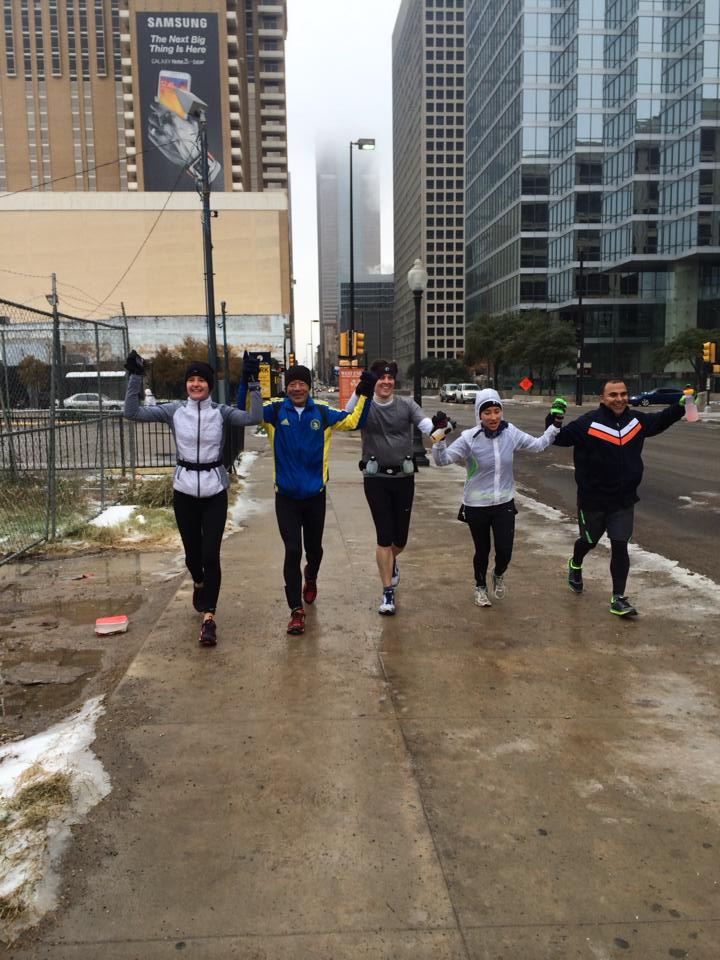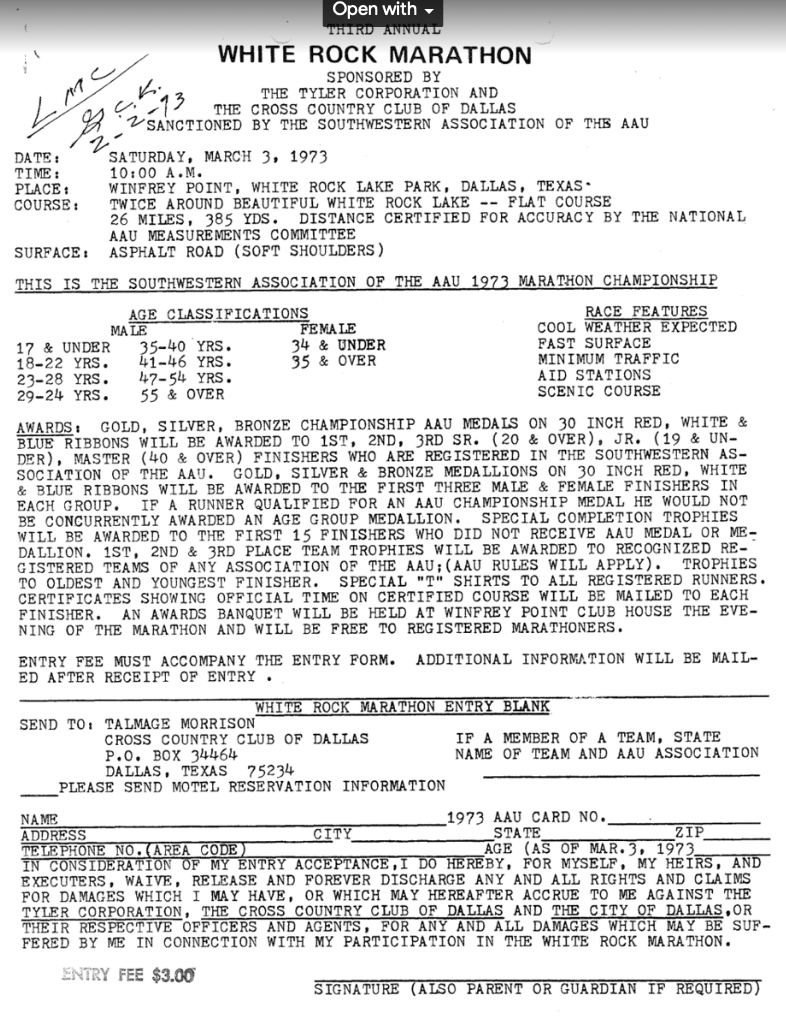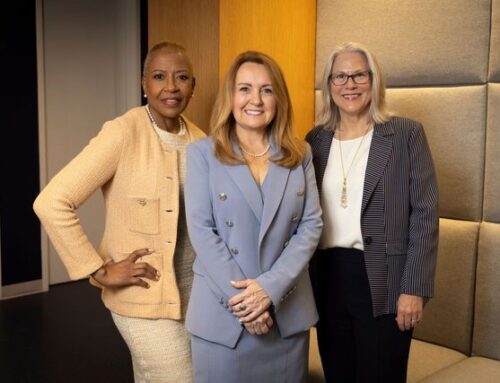On a March afternoon in 1971, 80 men and two women took off on the first White Rock Marathon, which consisted of a couple loops (plus) around the lake.
A teacher from Little Rock won in a time of 2:38:09.
Annabelle Carboy was the sole female finisher in 4:12:25.
Her finish in Dallas came just four years after the Boston Marathon director infamously dragged Katherine Switzer off the course for the violation of being a woman.
This year, for the Dallas marathon’s 50th anniversary, a 74-year-old Carboy reportedly is registered for the half.
In the 1970s organizers switched from noon to a morning start and moved race date to wintertime, because cooler temps are conducive to distance running. Weather doesn’t always work out. But it’s Texas. You do your best.
It cost $3 to register for the marathon in the 70s. Today it costs $179.
This Sunday‘s (Dec. 12) 26.2 main event begins at 8:30 a.m. for the fastest corral of runners. To avoid congestion these days, participants start in waves based on anticipated pace and wear a timing chip. Marathon weekend, beginning Friday, is full of events from a running exposition, to fun runs and — the opposite of that—a 50-kilometer race (it’s sold out).
Lots of street closures. Just avoid streets in center Dallas, White rock Area, South Dallas and East Dallas is our advice. And unlike many running events, this is not a morning thing. It’s an all-day thing.
Our city’s marathon was founded by erstwhile Cross Country Club of Dallas president Tal Morrison — who, right up until his 2016 death regularly attended his eponymous springtime 15k at White Rock, the Tal Morrison Classic, which raises scholarship funds for local high schoolers. Morrison, a WWII veteran, was Dallas’ Fred Lebow (if you’re not sure, there are two documentaries about the New York City Marathon founder — Run for Your Life and Free to Run — on Hulu).
Many runners of the era, including Carboy, are on record crediting Preston Hollow legend Dr. Kenneth Cooper with their interest in the sport. He had introduced the concept of aerobics, publishing the first groundbreaking book on exercise in 1968.
Over the years, the marathon has increased in popularity, blossoming into an event that accommodates 22,000 participants — including thousands of women (who have gotten faster)— transverses multiple neighborhoods, boosts the Dallas economy by $9 million per year and brings in charity funds also in the millions.
Growth doesn’t come without complications. From traffic issues and resident remonstrances to runners’ complaints and resistance to change, the marathon’s seen its share of conflict.
In 2012 the event rebranded from White Rock Marathon to Dallas Marathon. The most disappointing part about that is the loss of the “The Rock” nickname many of us grew up hearing. But that did cause a stir among the traditionalists. Organizers told The Advocate the name change was part of an effort to make the December marathon stand apart from Dallas’ other running events and marathons and to turn it into a “world class” signature city attraction.
In 2013 an ice storm led to empty, frozen streets on the day that should have been filled with excitement. Some die hards ran the thing anyway. In 50 years, Dallas’ marathon has been called off just twice. The other time was COVID.
Since the 1990s the event has given generously to the kids at the Scottish Rite for Children — to the tune of several million dollars.
A few other tidbits for those new to watching or running Dallas. The course traditional features live musical acts along the course and at pre- and post-race parties. It can get loud.
Front yards become pre-noon parties. Runners, if it’s not an official aid station, check that cup. Handing out cups full of beer and whiskey is definitely a thing.
Two big hills in Lakewood along the south side of White Rock Lake are known by old timers as the Dollies or the Dolly Parton Hills. For many years they occurred about 20-22 miles into the race, which made them seem especially large. We can only hope that this year the tribe of Dolly impersonators, usually bros, will be manning an aid station in the hills’ vicinity, as has been tradition.
Volunteers, don’t take it personally when the runner grabs the Gatorade from your hand and slams it before chucking the cup back in your face. It’s her way of saying “thank you.”
More about this weekend will be on the Marathon’s website, Twitter, IG or Facebook page.







